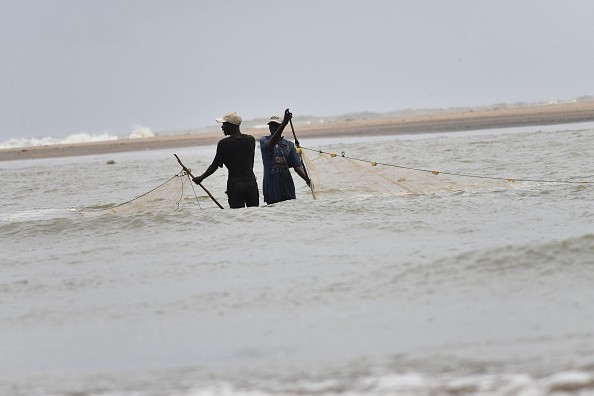From being extinct and rediscovered, the rare and small estuarine Pipefish in South Africa is considered critically endangered and very elusive to studies. However, a recent report said that environmental DNA played a significant role in motoring the estuarine pipefish.
The population of estuarine pipefish (Syngnathus watermeyeri) is elusive and difficult to locate. Having the exact number of their population is a challenge for many researchers and conservationists.
Critically endangered Pipefish in South Africa
 (Photo : SIMON MAINA/AFP via Getty Images)
(Photo : SIMON MAINA/AFP via Getty Images)
Sabaki river estuary or river mouth in Malindi on February 10, 2022

Sabaki river estuary or river mouth in Malindi on February 10, 2022
However, the use of advanced technology and developments in Science have helped researchers to unlock unknown species.
According to the report published in The Conversation, the rare estuarine pipefish is endemic in estuaries in portions of South Africa. At first, researchers thought it was already extinct, but their species emerged in 1996 when the technology was not modernized.
The NOAA National Ocean Service said that the estuary is a fresh and saltwater mix, having an important habitat for aquatic animals and plants. It is also considered one of the most important ecosystems.
Furthermore, the report explained that researchers were challenged to investigate the estuarine pipefish. Traditional use of tagging and netting would not be useful because of their small size and elusiveness.
Environmental DNA and conservation efforts
As a result, successful spotting of estuarine would be the key to locating the animals. Because it is endemic in estuaries on the Eastern Cape in South Africa, the researchers looked into the said places.
Using new technology and method, the researchers employed a different approach to detecting the elusive animal. According to the same report published in Phys.org, using environment DNA (eDNA) was crucial to locating the rare pipefish.
The report explained that the eDNA could show the biodiversity of the aquatic animal and their presence. In addition, researchers could obtain data from the estuary, from feces and blood, water and soil.
Also Read: Conservation Zones To Help Mekong River Protect and Save Endangered Irrawaddy Dolphins in Cambodia
With the new method, the researchers could have a detailed and monitoring view of the rare estuarine pipefish. It would be helpful to save and conserve them from threats of extinction. Locating the said species is key to conservation efforts.
Because the researchers understood the estuaries thriving of rare pipefish, the researcher obtained samples from prominent estuaries. They looked into estuaries in West Kleimonde, Bushmans, Kariega and Kasouga.
The process and method build were both challenging for the researchers as they explored the existence of pipefish in the estuaries.
According to the Conservation report, the study brought the samples to Curtin University in Perth, Western Australia, to study the DNA that the researchers gathered.
- Based on the report, the researchers discovered that estuaries are significant to plants and animals but also suffer from pollution.
- The eDNA samples obtained from the selected estuaries revealed that the rare pipefish was extinct in East and West Kleimonde and Kasouga.
The conservation efforts are crucial for the declining population of the rare estuarian pipefish. eDNA has helped locate the diversity and emergence of estuaries, some reported as extinct.
Related Article: Palau Reefs Tolerant to Extreme Marine Heatwaves, New Study Reveal
For more similar, don't forget to follow Nature World News.
© 2024 NatureWorldNews.com All rights reserved. Do not reproduce without permission.

![Tsunami Hazard Zones: New US Map Shows Places at Risk of Flooding and Tsunamis Amid Rising Sea Levels [NOAA]](https://1471793142.rsc.cdn77.org/data/thumbs/full/70325/280/157/50/40/tsunami-hazard-zones-new-us-map-shows-places-at-risk-of-flooding-and-tsunamis-amid-rising-sea-levels-noaa.jpg)



